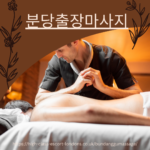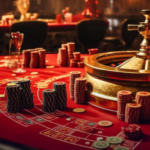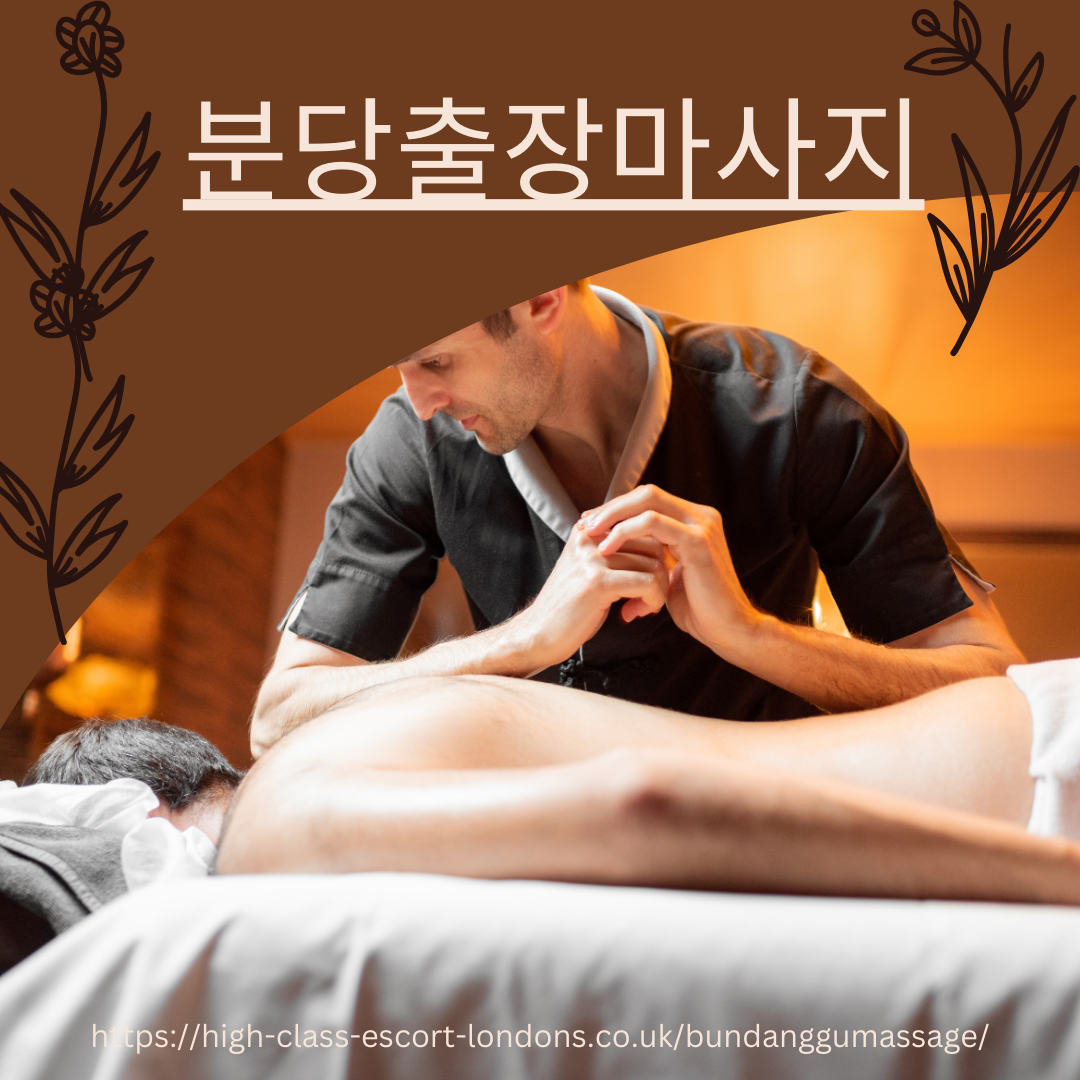
Massage Mysteries: Unveiling the Secret Names of Relaxation
Introduction to Massage and Relaxation
Massage, a therapeutic practice that has roots in various cultures, is widely recognized for its numerous health benefits. This holistic approach to wellness revolves around manipulating the body’s soft tissues through various techniques, providing relief from physical and mental stress. The practice not only promotes relaxation but also plays a crucial role in relieving muscle tension, enhancing blood circulation, and improving flexibility. In an increasingly fast-paced world, the need for effective relaxation techniques has never been more critical, emphasizing the significance of massage therapy.
Relaxation is essential for maintaining a balanced lifestyle, as chronic stress can lead to various health complications, including anxiety, depression, and various chronic conditions. As individuals navigate through their daily responsibilities, the fleeting moments of tranquility often become scarce. This is where the art of massage comes to the forefront, offering a sanctuary of calmness and restoration. Different massage techniques have been developed to cater to individual needs, with each style focusing on different aspects of relaxation and healing.
Mysteries surround the unique names assigned to various massage techniques, which often reflect their cultural origins and intended benefits. From Swedish and deep tissue to shiatsu and aromatherapy, each type serves a distinct purpose in promoting relaxation and enhancing overall wellness. By understanding these diverse techniques and their specific benefits, individuals can make informed choices about their therapeutic massage experiences. This exploration will not only deepen our appreciation for the craft but will also illuminate the path to a more relaxed and fulfilled life.
The History of Massage: Ancient Roots to Modern Practices
Massage therapy has a rich and diverse history that dates back thousands of years, with its origins rooted in ancient civilizations such as Egypt, Greece, and China. The practice of manipulating the body’s soft tissues has been utilized for therapeutic and relaxation purposes across various cultures, leading to the development of a myriad of techniques, each endowed with specific names and philosophies.
In ancient Egypt, evidence of massage practices can be found in hieroglyphs that date back to 2500 BCE, portraying scenes of individuals receiving massages from therapists. The Egyptians understood the connection between physical touch and overall well-being, using massage not only for relaxation but also for medical treatments. This cultural appreciation for massage laid the groundwork for subsequent practices in the Mediterranean region.
Greek civilization further advanced the art of massage with the influence of notable figures such as Hippocrates, who regarded it as an essential component of medical treatment. The Greeks developed specific techniques and created distinct names for their methods, such as “anatripsis,” which refers to the process of rubbing to invigorate the body. This lexicon reflected their understanding of anatomy and physiology, emphasizing the importance of physical care in health.
In Asia, traditional Chinese medicine incorporated massage techniques known as “Tui Na,” which literally translates to “push grasp.” This ancient practice is deeply intertwined with concepts of energy flow and balance, showcasing how cultural beliefs shaped distinct approaches to bodywork. Over the centuries, as trade routes expanded and cultures intermingled, these ancient practices began to converge, influencing modern-day massage techniques.
분당출장마사지, the evolution of massage therapy continues, blending ancient practices with contemporary methodologies. Techniques such as Swedish massage, deep tissue massage, and sports massage owe their origins to these historical practices, demonstrating a harmonious relationship between tradition and innovation in the realm of relaxation and healing.
Common Types of Massage and Their Unique Names
Massage therapy encompasses a variety of techniques, each designed to promote relaxation and address specific physical and mental needs. Among the most popular types of massage, the Swedish massage stands out for its gentle approach. Utilizing long, sweeping strokes, kneading, and circular movements, Swedish massage aims to ease muscle tension, improve circulation, and enhance overall relaxation. This foundational technique is often recommended for individuals seeking a calming experience.
Another prominent type is deep tissue massage, which focuses on the deeper layers of muscle and connective tissue. It employs slower, more intense strokes aimed at relieving chronic tension and pain. The name “deep tissue” aptly describes the technique’s goal: to reach the underlying structures and promote healing. This massage is particularly beneficial for athletes or people with physically demanding jobs, as it alleviates tightness and promotes recovery.
Aromatherapy massage combines the therapeutic effects of touch with the calming properties of essential oils. During this treatment, specific oils are chosen based on their unique scents and health benefits. The name “aromatherapy” reflects the dual focus on the physical technique and the sensory experience provided by the fragrances. This type of massage encourages relaxation, stress relief, and an overall sense of well-being.
Sshiatsu, a Japanese massage technique, translates to “finger pressure.” This unique approach uses finger and palm pressure on specific points along the body’s meridians to restore energy balance and promote relaxation. The emphasis on pressure points sets Shiatsu apart from other forms of massage, making it a popular choice for those seeking to enhance their body’s natural healing abilities. Each type of massage, with its distinctive name and technique, serves a specific purpose, catering to a range of relaxation goals and therapeutic needs.
The Psychological Impact of Massage Names
The names given to various massage types play a significant role in shaping client perceptions and expectations regarding relaxation and healing. Psychological branding has become an integral aspect of wellness services, with carefully crafted names evoking specific emotions and responses. For instance, a massage referred to as “Swedish” may conjure images of tranquility and gentle touch, whereas a term like “deep tissue” might imply intensity and targeted relief, resulting in different emotional reactions from potential clients.
Name recognition not only sets expectations but can also foster feelings of comfort and safety. When clients encounter familiar names associated with massage techniques, they may experience a sense of ease and anticipation. This can enhance the overall relaxation response during the session. Conversely, unfamiliar or overly complex names may generate anxiety or skepticism, ultimately diminishing the expected benefits of the treatment.
The psychological underpinnings of these associations can be complex. Research suggests that certain terms can evoke a more profound emotional connection, influencing the perceived effectiveness of the massage experience. For example, names that imply natural or holistic elements, such as “aromatherapy” or “therapeutic,” may instill a sense of wellness and promote a feeling of pampering and self-care. Additionally, names tied to cultural practices—such as “Thai” or “Shiatsu”—may enhance an air of authenticity, appealing to clients’ desires for a comprehensive and enriching experience.
Moreover, the classification of massages into categories, such as relaxation, therapeutic, or energizing, further shapes client understanding and choice. The distinction aids clients in navigating the diverse offerings available to them. Thus, the psychological impact of massage names is profound, directly influencing client perceptions and responses to relaxation and healing therapies.
Cultural Significance of Massage Names Across the Globe
Massage practices are deeply intertwined with cultural beliefs, traditions, and histories around the globe. Each culture has developed its own unique approaches to massage, often reflected in the specific names assigned to these techniques. These names serve as more than mere labels; they encapsulate the cultural heritage and philosophies underpinning the methods. For example, the ancient Indian practice of Ayurveda, which integrates wellness and holistic healing, includes ‘Abhyanga’—a restorative massage that utilizes warm oils. The name itself embodies the essence of balancing the body, mind, and spirit.
Similarly, in the realm of Thai massage, known as ‘Nuad Boran’, the term translates to “ancient massage”. This highlights not only the age of the tradition but also reflects the connection to Thailand’s spiritual and cultural values. The practice emphasizes flexibility and energy flow, which are essential components in understanding the philosophy behind the naming conventions. Each name in these traditions encapsulates specific meanings and implications that enhance the significance of the practice.
Furthermore, the Japanese practice of ‘Shiatsu’, translating to “finger pressure”, inherently communicates the technique involved. This descriptive structure offers insight into the functional aspects of the massage itself, linking the name with its therapeutic objectives. Similarly, the Hawaiian ‘Lomi Lomi’ massage derives its name from the Hawaiian term meaning ‘to knead, rub, or soothe’, illustrating the intimate connection between the name and the physical act of massage.
In essence, the diverse names of massage techniques around the world do more than describe the practices; they reveal the encompassing philosophies and cultural narratives that have shaped these traditions. Understanding these names fosters a deeper appreciation for the cultural significance of massage, illuminating the path to enhanced relaxation and wellness that transcends geographical boundaries.
The Science Behind Relaxation: How Massage Works
Massage therapy has been recognized for its therapeutic benefits for centuries, and scientific understanding now supports its effectiveness in promoting relaxation and reducing stress. The physiological effects of massage are profound, engaging various systems within the body. One of the primary ways massage promotes relaxation is through the activation of the parasympathetic nervous system, which counters the stress-induced sympathetic nervous system activity. This shift reduces heart rate and lowers blood pressure, fostering a state of calm.
Research has shown that massage stimulates the release of endorphins, often referred to as ‘feel-good’ hormones, which work to elevate mood and alleviate pain. These neurochemical changes play a crucial role in enhancing relaxation while simultaneously mitigating the effects of stress. Various massage techniques, such as Swedish massage, deep tissue massage, and trigger point therapy, each target specific muscle groups and tension patterns to elicit diverse physiological responses. For instance, the fluid strokes of Swedish massage are particularly effective at promoting relaxation and increasing circulation, while deep tissue massage focuses on penetrating deeper muscle layers to release chronic tension.
In addition to these hormonal and neurological effects, massage has been linked to reductions in muscle tension and improved flexibility, which further support relaxation. The application of pressure and kneading enhances the body’s production of collagen and elastin, thus contributing to increased blood flow and faster recovery times. Studies indicate that individuals receiving regular massage therapy report lower levels of cortisol, a hormone associated with stress, and improved overall psychological well-being.
Through the integration of various techniques and the evocative names associated with them, such as ‘Shiatsu’ or ‘Thai massage’, practitioners tailor their approach to suit individual needs, ultimately encouraging a deeper connection between mind and body. Understanding the science behind relaxation through massage highlights its significant role in holistic health and wellness, promoting not only relaxation but a comprehensive improvement in quality of life.
Personalizing Your Massage Experience: Choosing the Right Name
Choosing the appropriate massage style is an essential step in creating a personalized relaxation experience. With a plethora of therapy names available, understanding what each style entails can significantly influence one’s decision. Various therapies often carry names that hint at their techniques, origins, or intended benefits, serving as a guide for individuals to navigate their options. For instance, terms like “Swedish” may suggest a gentle, flowing technique aimed at relaxation, while “Deep Tissue” indicates more intense manipulation targeting muscle knots and deeper layers of connective tissue.
To effectively select a suitable massage type, individuals should first consider their specific needs. Are you seeking relaxation after a long week, or are you addressing chronic pain that requires a targeted approach? Reviewing the underlying purpose tied to each therapy name can aid in discerning which method aligns with personal goals. Additionally, potential clients may feel inclined to seek recommendations from others or explore service providers who specialize in particular forms of therapy. Engaging with professionals can provide insights into which types of massage may best suit individual circumstances.
Furthermore, considering personal preferences is equally vital in this selection process. For example, individuals with a sensitivity to pressure might favor lighter techniques such as Lomi Lomi, while those familiar with sports may gravitate towards Sports Massage for its focus on performance enhancement and injury recovery. Understanding one’s comfort level with various modalities can facilitate a more enjoyable and beneficial experience. By taking the time to assess these factors, clients can approach their massage journey with confidence, ensuring that their chosen therapy name correlates meaningfully with the relaxation and relief they seek.
Real-Life Experiences: Testimonials and Stories
Massage therapy has long been embraced as a trusted method for relaxation and healing, and the diverse range of techniques often reflects the precision behind their names. Individuals seeking relief from stress, pain, or tension frequently share transformative experiences that highlight the connection between therapy nomenclature and their resulting outcomes. For instance, a client named Sarah recounted her experience with a “Swedish Massage,” characterized by long, flowing strokes and gentle kneading. She noted that the name aptly represented the soothing nature of the treatment. Following her session, she was astonished to feel not only relaxed but also rejuvenated, validating the calming expectations set by the therapy’s title.
Another individual, Mark, showcased the invigorating responses from a “Deep Tissue Massage.” Despite the intensity implied by the name, he found the experience surprisingly therapeutic and enlightening. Initially apprehensive, he discovered that deeper pressure targeted his chronic muscle tension effectively. Mark expressed that the treatment lived up to its name, delivering significant relief and prompting him to rethink his relationship with pain management. This testament emphasizes how the term ‘deep tissue’ resonated with his sensations and outcomes, cementing the therapy’s efficacy in alleviating discomfort.
Additionally, Mia shared her experience with a “Hot Stone Massage,” which integrates heated stones to promote relaxation and release muscle tension. The experience was described as both unique and luxurious. The warmth of the stones provided a sensation that complemented the gentle pressure and rhythmic strokes from the therapist. Mia concluded that the name accurately foreshadowed the deep relaxation she felt, further underscoring the significance of clarity in massage therapy nomenclature.
These personal accounts underline how well-chosen names not only set expectations but also enhance the therapeutic experience, leading to satisfied clients who appreciate the effectiveness of their chosen treatments.
Conclusion: Embracing Massage as a Journey to Relaxation
In exploring the multifaceted world of massage, it becomes evident that the various names and techniques associated with relaxation play a crucial role in enhancing personal well-being. Each style of massage, whether it be Swedish, deep tissue, or aromatherapy, offers distinct benefits that cater to different needs and preferences. Understanding these names and the philosophy behind them provides valuable insights, enabling individuals to make informed choices about their relaxation journeys.
The significance of exploring different massage types cannot be overstated. Engaging in a variety of techniques allows for a deeper appreciation of how each form contributes to overall wellness. For example, while a Swedish massage might be perfect for unwinding after a stressful week, a therapeutic deep tissue session might address chronic tension areas, enhancing physical and mental health. By familiarizing oneself with these unique methods, individuals can tailor their relaxation practices to suit their specific requirements, thus fostering a more personalized wellness experience.
Embarking on this journey of massage exploration not only enriches one’s knowledge but also opens doors to new sensations and profound relaxation. Many individuals report heightened levels of tranquility and overall health improvements after regularly integrating different massage techniques into their routines. Therefore, each person is encouraged to delve into the world of various massage names and styles, eventually finding what resonates with them the most.
Ultimately, embracing massage as a holistic approach to relaxation invites individuals to discover a pathway to enhanced well-being. As one navigates through the diverse landscape of massage, it is essential to remain open to new experiences, as they can lead to unexpected benefits and a deeper understanding of personal health. By exploring these techniques, one can genuinely embark on a rewarding journey toward lasting relaxation and rejuvenation.






